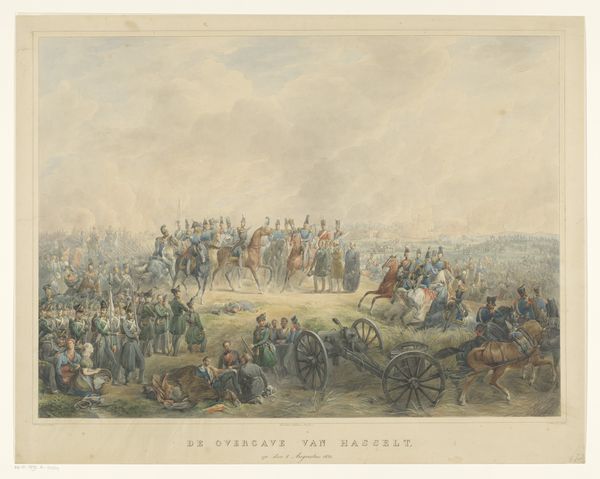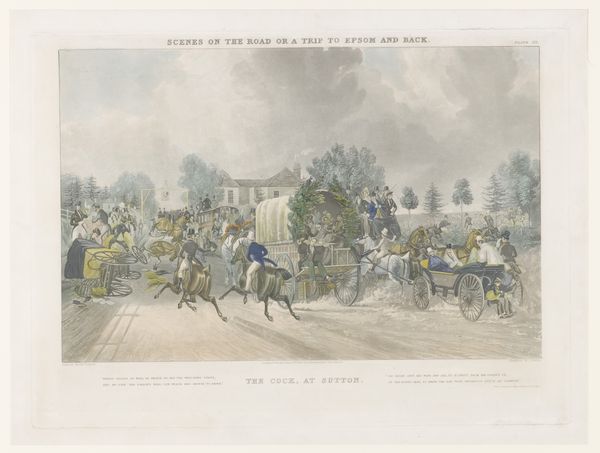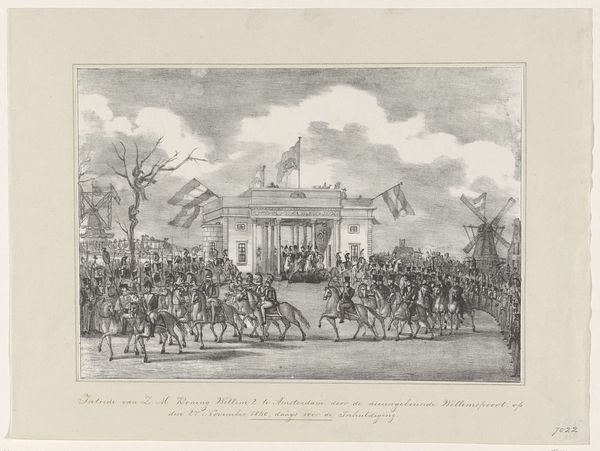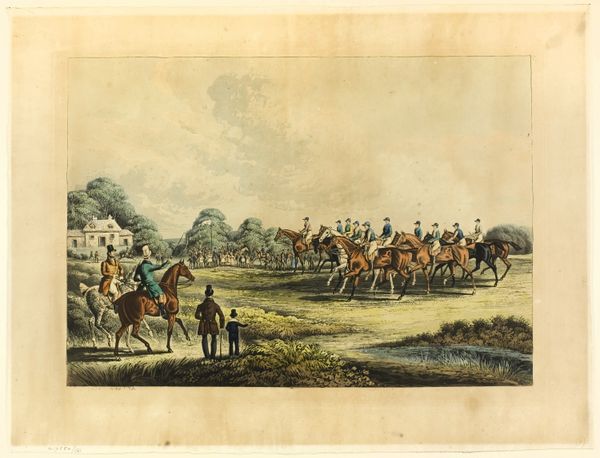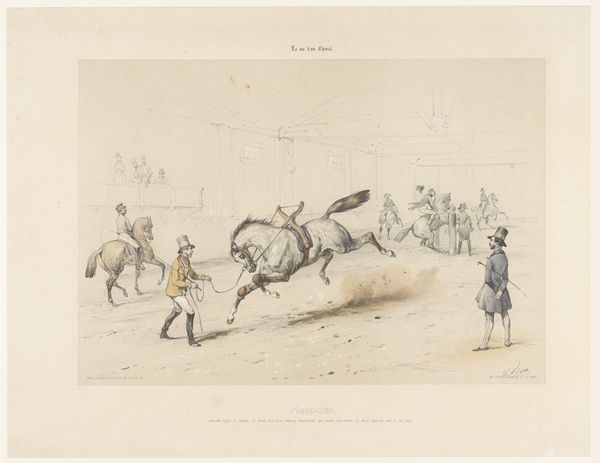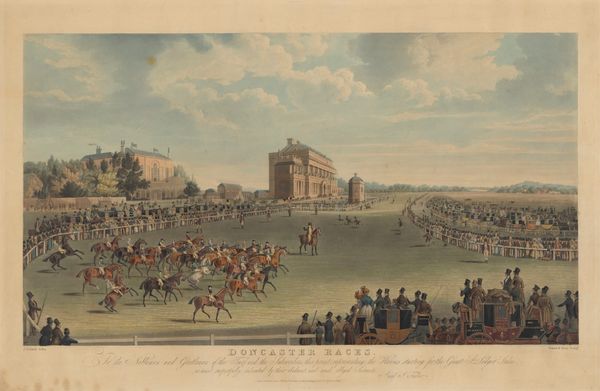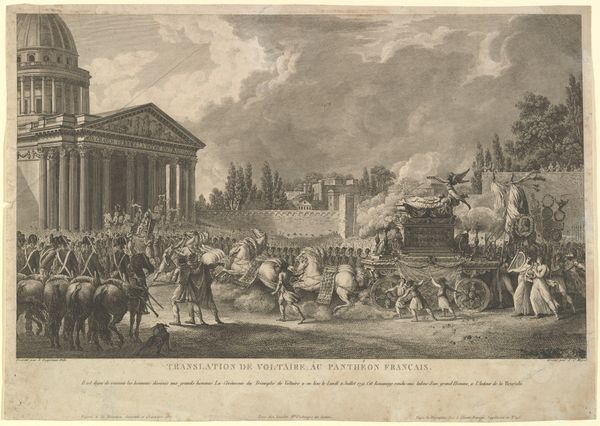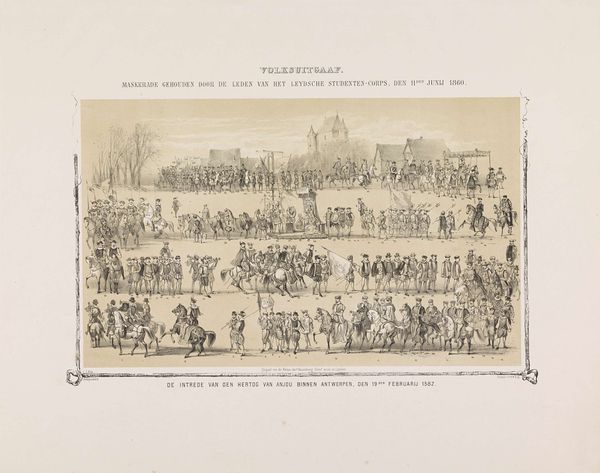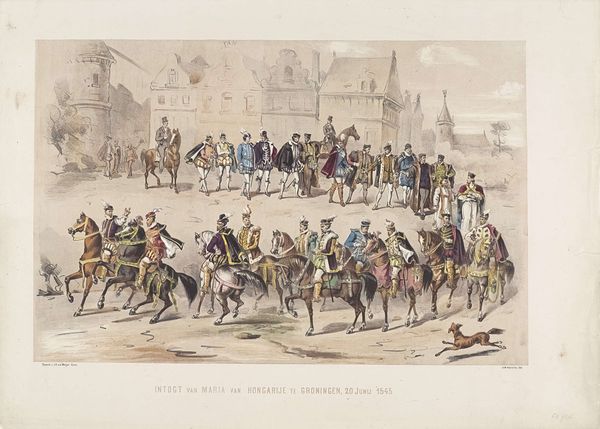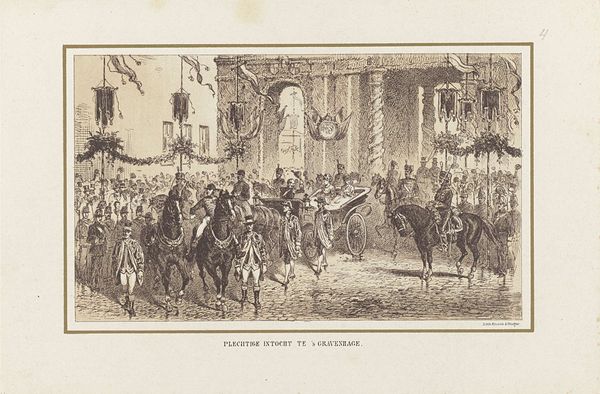
painting, print, watercolor
#
painting
# print
#
landscape
#
watercolor
#
romanticism
#
cityscape
#
watercolour illustration
#
history-painting
#
watercolor
Dimensions: height 406 mm, width 557 mm
Copyright: Rijks Museum: Open Domain
Editor: Here we have “View of a Street and Wellington Arch at Hyde Park Corner," created in 1838, by John Harris, using watercolor. It captures such a vibrant, bustling street scene; I'm struck by how many people are out and about. What can you tell me about the public's relationship with Hyde Park at this time? Curator: This print provides a window into the socio-political landscape of 19th-century London. The Wellington Arch, still relatively new, symbolized British military triumphs, yet its placement also reveals the complexities of urban development. Consider how the image celebrates aristocratic leisure, showcasing fashionable figures prominently. It hints at an uneven distribution of space and privilege. Do you notice anything about who is shown versus who is likely absent from the scene? Editor: Well, you don't see many working-class individuals represented here. Everyone seems very well-dressed and appears to be a member of the upper classes, which really contextualizes the whole idea of leisure. Curator: Exactly. Harris likely aimed to cater to a specific audience with refined taste. The print subtly reinforces prevailing social hierarchies. Think about the museums of the era; who did they serve, and whose stories were deemed worthy of representation? This image, similarly, is a product of its time, reflecting particular values and power structures. Editor: That makes me consider how art served specific audiences. Thanks for shedding light on the socio-political dynamics at play. Curator: My pleasure. Examining art through the lens of history illuminates its cultural significance and social context. It reveals whose stories were being told and whose were being excluded from these narratives.
Comments
No comments
Be the first to comment and join the conversation on the ultimate creative platform.
